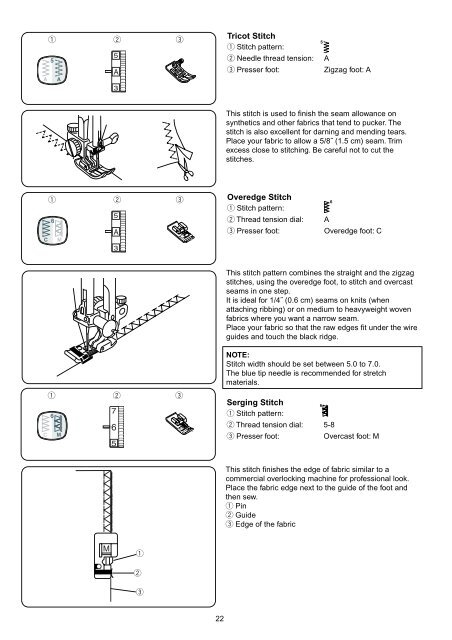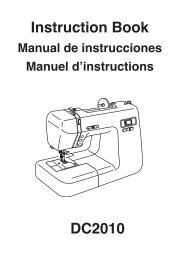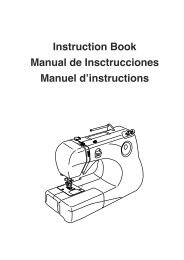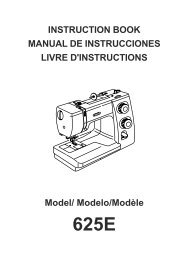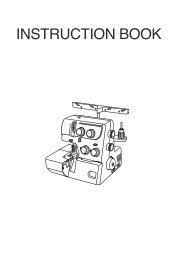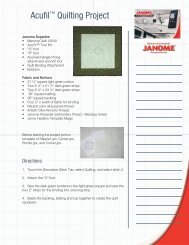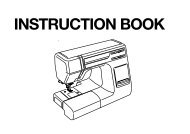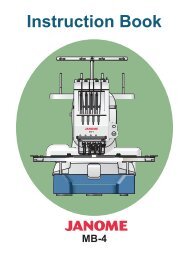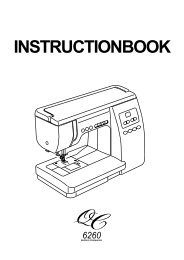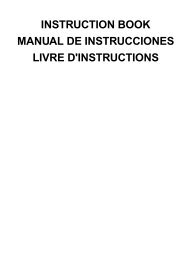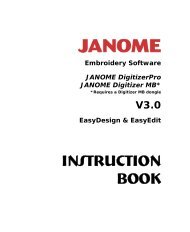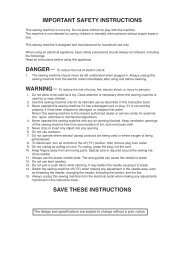Download Manual - Janome
Download Manual - Janome
Download Manual - Janome
You also want an ePaper? Increase the reach of your titles
YUMPU automatically turns print PDFs into web optimized ePapers that Google loves.
q w e<br />
q w e<br />
q w e<br />
q<br />
w<br />
e<br />
22<br />
Tricot Stitch<br />
q Stitch pattern:<br />
w Needle thread tension: A<br />
e Presser foot: Zigzag foot: A<br />
This stitch is used to finish the seam allowance on<br />
synthetics and other fabrics that tend to pucker. The<br />
stitch is also excellent for darning and mending tears.<br />
Place your fabric to allow a 5/8˝ (1.5 cm) seam. Trim<br />
excess close to stitching. Be careful not to cut the<br />
stitches.<br />
Overedge Stitch<br />
q Stitch pattern:<br />
w Thread tension dial: A<br />
e Presser foot: Overedge foot: C<br />
This stitch pattern combines the straight and the zigzag<br />
stitches, using the overedge foot, to stitch and overcast<br />
seams in one step.<br />
It is ideal for 1/4˝ (0.6 cm) seams on knits (when<br />
attaching ribbing) or on medium to heavyweight woven<br />
fabrics where you want a narrow seam.<br />
Place your fabric so that the raw edges fit under the wire<br />
guides and touch the black ridge.<br />
NOTE:<br />
Stitch width should be set between 5.0 to 7.0.<br />
The blue tip needle is recommended for stretch<br />
materials.<br />
Serging Stitch<br />
q Stitch pattern:<br />
w Thread tension dial: 5-8<br />
e Presser foot: Overcast foot: M<br />
This stitch finishes the edge of fabric similar to a<br />
commercial overlocking machine for professional look.<br />
Place the fabric edge next to the guide of the foot and<br />
then sew.<br />
q Pin<br />
w Guide<br />
e Edge of the fabric


